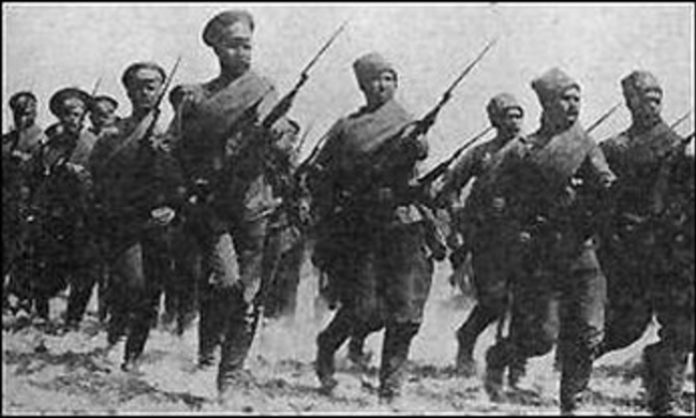
Russian forces managed to break through the Austro-Hungarian defenses and force them to withdraw. The offensive under the command of Russian General Alexei Brusilov in World War I, also known as Brusilov’s offensive, began on June 4, 1916. It was the greatest Russian success during that war and one of the most massive offensives in the entire history of the war.
The offensive itself began at the appeal of the British and French, who found themselves in a difficult situation on the western front, and begged the Russians to release them from the great German pressure with an offensive in the east. General Brusilov made a plan of a mass offensive against the Austro-Hungarian forces in Galicia. He opted for a new offensive tactic that relied on striking small elite units at enemy weak points. Then the majority of the forces would use the holes in the enemy’s defense and break the line of defense on the wide front through the created holes. On the eve of the offensive, he gathered four armies of the Russian Imperial Army, with a total of 40 infantry and 15 cavalry divisions. It was about 633,000 armed men, who were to carry out a surprise attack on a 480-kilometer-long battlefield.
The offensive began with massive barrage artillery fire on Austro-Hungarian lines. The key was that the artillery fire was short and precise, which differed from the previous customs of long artillery attack, which usually allowed defenders to draw reserve forces and empty front trenches. The initial attack was successful and the Austro-Hungarian lines were breached, which enabled 3 of the 4 Brusilov’s armies to advance on a wide front, forcing the enemy to withdraw en masse.
As early as June 8, ie only four days after the start of the offensive, the Russians captured Lutsk, a city in present-day Ukraine. During the Russian invasion, the Austro-Hungarian commander, Archduke Joseph Ferdinand, barely escaped capture. The offensive lasted until September 20, and during the fighting about 1.5 million Austro-Hungarian soldiers were thrown out of the machine (killed, wounded, captured and missing), on the Russian side there were about half a million killed and wounded.




